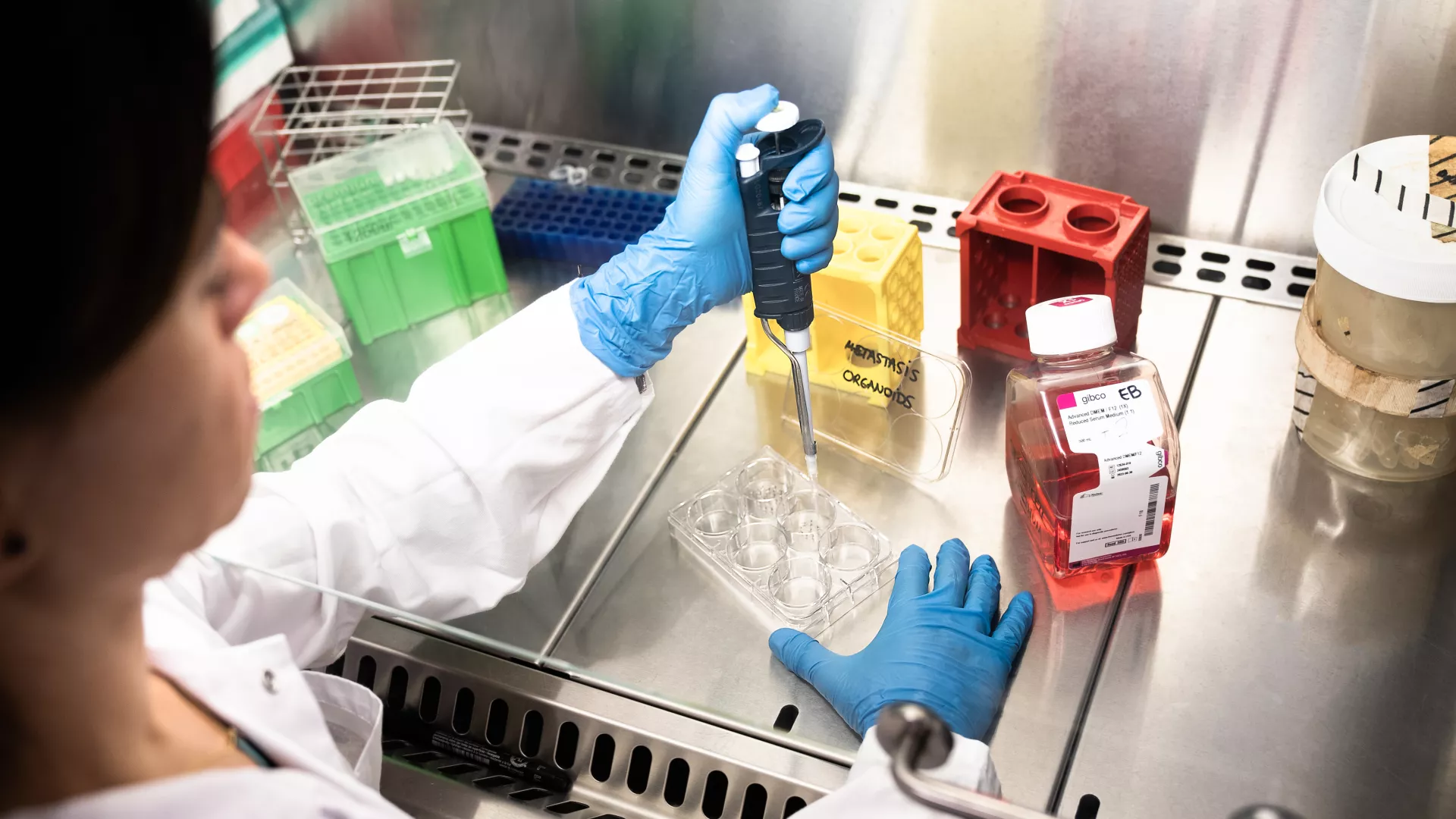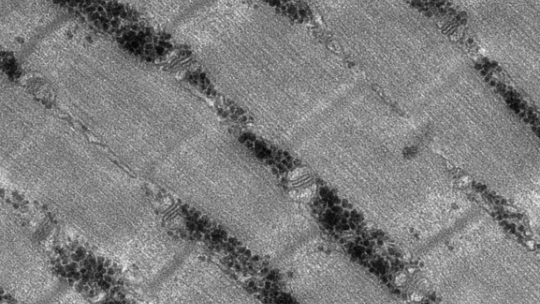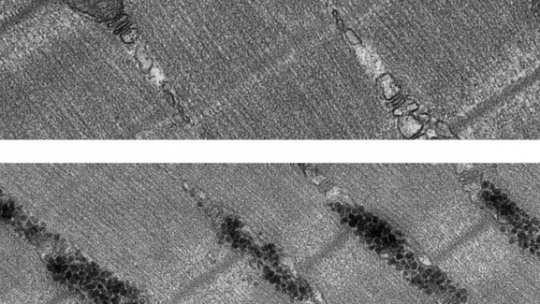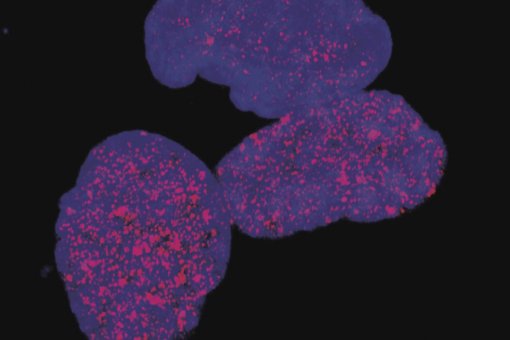Images
Participants







Contact

A study published in Cell Metabolism by IRB Barcelona scientists turns long-standing assumptions about glycogen biology on their head.
The results may explain the muscular defects of patients with glycogen storage disease XV.
In 2009, Usain Bolt set the world record in the 100-meter dash, thanks in large part to a carb called glycogen. This molecule is stored in skeletal muscle and later released to fuel short and intense bouts of physical activity. The basics of glycogen biology are thought to be well established, but a study in rodents published July 5th in the journal Cell Metabolism turns long-standing assumptions on their head. Surprisingly, the researchers found that glycogen synthesis does not require a protein called glycogenin, and that high glycogen levels actually impair endurance muscle performance in mice.
“These findings change our perspective on glycogen synthesis and the role of glycogenin in muscle physiology,” says senior author Joan Guinovart group leader of the Institute for Research in Biomedicine (IRB Barcelona), researcher of the Spanish network CIBERDEM in Diabetis and Metabolic Diseases, and full professor of the University of Barcelona. “From a clinical standpoint, our study also unravels the mechanisms underlying glycogen storage disease XV, a genetic disorder that was recently described in humans for the first time.”
In skeletal muscle, fast-twitch glycolytic fibers use glycogen as the main energy source for anaerobic metabolism, serving to sustain brief periods of high-intensity activity. On the other hand, slow-twitch fibers use oxidative metabolism for prolonged low-intensity activity. For decades, scientists have known that muscle glycogen levels are strongly associated with strenuous exercise performance. It is generally accepted that glycogen synthesis requires an enzyme called glycogenin, which catalyzes the formation of a sugar chain consisting of glucose molecules.
The importance of proper glycogen synthesis is illustrated by a fatal neurodegenerative condition called Lafora disease. Due to the build-up of toxic glycogen clumps in neurons and other cell types, patients with this disease commonly experience severe epileptic seizures, motor impairment, muscle spasms, and dementia. Guinovart and his team previously demonstrated that blocking glycogen synthesis by depleting a molecule called glycogen synthase provides a means to effectively treat these patients.
In order to find alternative targets for the disease, Guinovart and first author Giorgia Testoni of IRB Barcelona generated glycogenin-deficient mice, expecting to also block glycogen accumulation in cells. To their surprise, they found high quantities of glycogen in the muscle tissue of these mice. Despite higher glycogen levels, glycogenin-deficient mice underperformed normal mice, reaching exhaustion earlier and covering a shorter distance while running on a treadmill. The mice had a 30% slower running time than usual and covered 50% less distance. The reason for the poor endurance performance of glycogenin-deficient mice was that slow-twitch muscles in the calves started to resemble fast-twitch muscles, switching from oxidative metabolism to glycolytic metabolism.
Contrary to their original expectations, Guinovart and his team did not discover a new treatment option for patients with Lafora disease, because glycogenin deficiency did not prevent glycogen accumulation as they had originally suspected. However, the results may explain the muscular defects of patients with glycogen storage disease XV. As first reported in 2014, patients with this condition show glycogenin depletion in skeletal muscle and muscle weakness, despite high glycogen levels.
“The striking similarities between human patients and the glycogenin-deficient mice we used in our study could open new avenues to understanding the molecular basis of glycogen storage disease XV and developing effective treatments for this newly described disease,” Guinovart says.
This study was supported by grants from the Spanish MINECO. Additional support was provided by an NHMRC CJ Martin Fellowship, the National Institute of Health (NIH), and the CSD Consortium.
Reference article:
About IRB Barcelona
Created in 2005 by the Generalitat de Catalunya (Government of Catalonia) and University of Barcelona, IRB Barcelona is a Severo Ochoa Centre of Excellence, a seal that was awarded in 2011. The institute is devoted to conducting research of excellence in biomedicine and to transferring results to clinical practice, thus improving people’s quality of life, while simultaneously promoting the training of outstanding researchers, technology transfer, and public communication of science. Its 25 laboratories and seven core facilities address basic questions in biology and are orientated to diseases such as cancer, metastasis, Alzheimer’s, diabetes, and rare conditions. IRB Barcelona is an international centre that hosts 400 employees and 32 nationalities. It is located in the Barcelona Science Park. IRB Barcelona forms part of the Barcelona Institute of Science and Technology (BIST) and the “Xarxa de Centres de Recerca de Catalunya” (CERCA).
About IRB Barcelona
The Institute for Research in Biomedicine (IRB Barcelona) pursues a society free of disease. To this end, it conducts multidisciplinary research of excellence to cure cancer and other diseases linked to ageing. It establishes technology transfer agreements with the pharmaceutical industry and major hospitals to bring research results closer to society, and organises a range of science outreach activities to engage the public in an open dialogue. IRB Barcelona is an international centre that hosts 400 researchers and more than 30 nationalities. Recognised as a Severo Ochoa Centre of Excellence since 2011, IRB Barcelona is a CERCA centre and member of the Barcelona Institute of Science and Technology (BIST).





